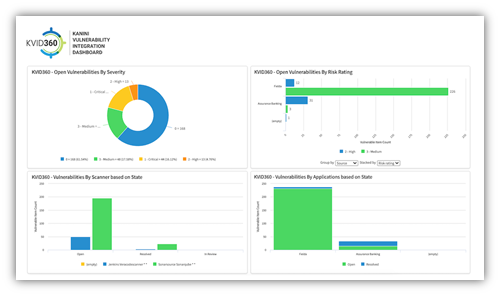Agile and DevOps continue to set the standard for continuous improvement in development and technology delivery. They are very likely the number one enablers of an organization like your digital ambitions.
Business needs are always changing. Organizations still need to focus on agile delivery methods, continuous quality, security, risk and compliance, reliability and resilience, and platform engineering to drive digital transformation. With 2020 and the global COVID-19 pandemic, other conversations about stability, scalability, and security came to the front of many discussions to meet businesses’ needs everywhere. As your business needs change, whether that be remote work, improving customer journeys, or frictionless and contactless experiences, so does the growing need to understand the way your business works. The performance of regular vulnerability assessments is an integral part of maintaining your technology’s overall security and ensuring it is ready for whatever challenges your organization might face.
Prevent and Detect Security Flaws in your Code.

Automated application security and code testing help developers and AppSec pros eliminate vulnerabilities and build better, more secure software. It is no secret that large enterprises and their technology applications are under attack from a variety of threats frequently. To protect your company’s security, you must be sure that your applications are free of flaws that hackers could exploit to your organization’s detriment. While some tools require advanced integrations, simplicity is key to bringing code vulnerability testing to everyone on your development team.
At this point, if you don’t have the ability in your DevOps team to easily and quickly identify vulnerabilities in a consumable dashboard, you’re falling behind. More importantly, having the ability to identify security vulnerabilities during the early stages of development when they are least expensive to fix is critical to the success of your development team. It reduces security risks in applications by providing immediate real-time feedback to developers on issues introduced into code during early development.
In its 2020 State of Software Security report, Veracode found that increasing the number of vulnerability scans led to flaws being closed much more quickly. They found that the vast majority of applications (76 percent) have some security flaw, that half of the security findings are still open six months after discovery, and almost one-third of applications have more security findings in third-party libraries than in the native codebase.
Their take away?
“Even when faced with the most challenging environments, developers can take specific actions to improve the overall security of the application.”
Is vulnerability assessment critical in development?
Vulnerability assessments are a critical part of IT and development risk management lifecycles. It helps in protecting systems and data from unauthorized access and breaches.
Your technology, hardware, and software are the building blocks of everything your business does. Frequently, however, security is an afterthought. Now maybe you have “security built-in,” how do you go about testing it?
In ServiceNow, application scanners like SonarQube or Veracode generate PDF reports. Project Managers will have to look into issues in the PDF file and then create work Items.
Do you need it?
Active and regular vulnerability assessments will allow you to address vulnerabilities before they become weaknesses and address the important security questions you’ve been looking for.
How easily can you answer these questions?
- If customer data is compromised or breached, how will I know about it?
- What applications are running on my systems that I’m not aware of?
- Are my customer-facing systems open to unauthorized access, and if so, how?
How can you solve this issue today?
Bring all your vulnerability reports from Application Scanners like Sonarqube or Veracode into the ServiceNow portal allowing Project Managers to manage your Applications’ vulnerabilities within ServiceNow.
Do you think your development team would be more efficient if all their problems showed up on one, easy to read screen? If your answer is yes, then isn’t it time that you reviewed your security vulnerabilities at a glance with out-of-the-box security vulnerability dashboarding solutions?
While the National Vulnerability Database (NVD) and other sources collect information about known vulnerabilities, development leaders demand a single view to understand their various projects’ challenges. These vulnerabilities can include weaknesses in software, operating systems that malware can exploit, and other attacks. ServiceNow Vulnerability Response imports these and others from third-party tools and groups these vulnerable items according to established protocols, allowing you to quickly and easily remediate vulnerabilities.
If you haven’t heard of it yet, the Vulnerability Integration Dashboard is a FREE app now available in the ServiceNow store from Kanini Software – a ServiceNow Certified Partner. Kanini provides an integrated “Vulnerability Integration Dashboard” to manage your projects efficiently. This tool enables your project managers to directly improve their processes and help reach their targets at least three times faster!

The Vulnerability Integration Dashboard increases your technology development Project Manager productivity by 15-20% by reducing the time spent in gathering the vulnerabilities report and assigning and monitoring them to completion. The single view dashboard allows much better governance for organizations that have multiple projects to track and deliver on time every time.
Are you looking for an automated solution to run and report your vulnerability results?
There is an obvious need for overview dashboards to provide an executive view into vulnerabilities and vulnerable items. Kanini’s Vulnerability Integration Dashboard provides a vulnerability dashboard and action center on ServiceNow by integrating code scanner tools like sonarqube, Veracode, Fortify, etc., and IT project management tools like Azure DevOps.
The Kanini’s FREE to download app – Vulnerability Integration Dashboard solution currently supports integration with SonarQube but can be extended to support integration of ServiceNow with:
- Other vulnerability assessment tools such as Veracode, Fortify etc
- Other third-party tools that QA teams use for performance testing, to identify copyright violations, unauthorized libraries etc.
Kanini can even handle multiple sources of vulnerability data input – a) API b) XML – can be extended to handle additional file types.
At Kanini, we’re passionate about transforming businesses with intuitive user experience through digitized workflows. We help accelerate your digital transformation journeys by intuitively leveraging ServiceNow, the most modern IT Services Management platform.
Was this post helpful?
Let us know if you liked the post. That’s the only way we can improve.







Can you solution work with Checkmarx SAST instead of Fortify?
Hello Charles, the solution can be customized to Checkmarx, but in its current form it only works with Fortify, Veracode and SonarQube. If you’d like to have one created for Checkmarx, we can absolutely do that. Please share your details here – https://kanini.com/contact-us/, we will set up a call to discuss details within 24 hours. Thanks.